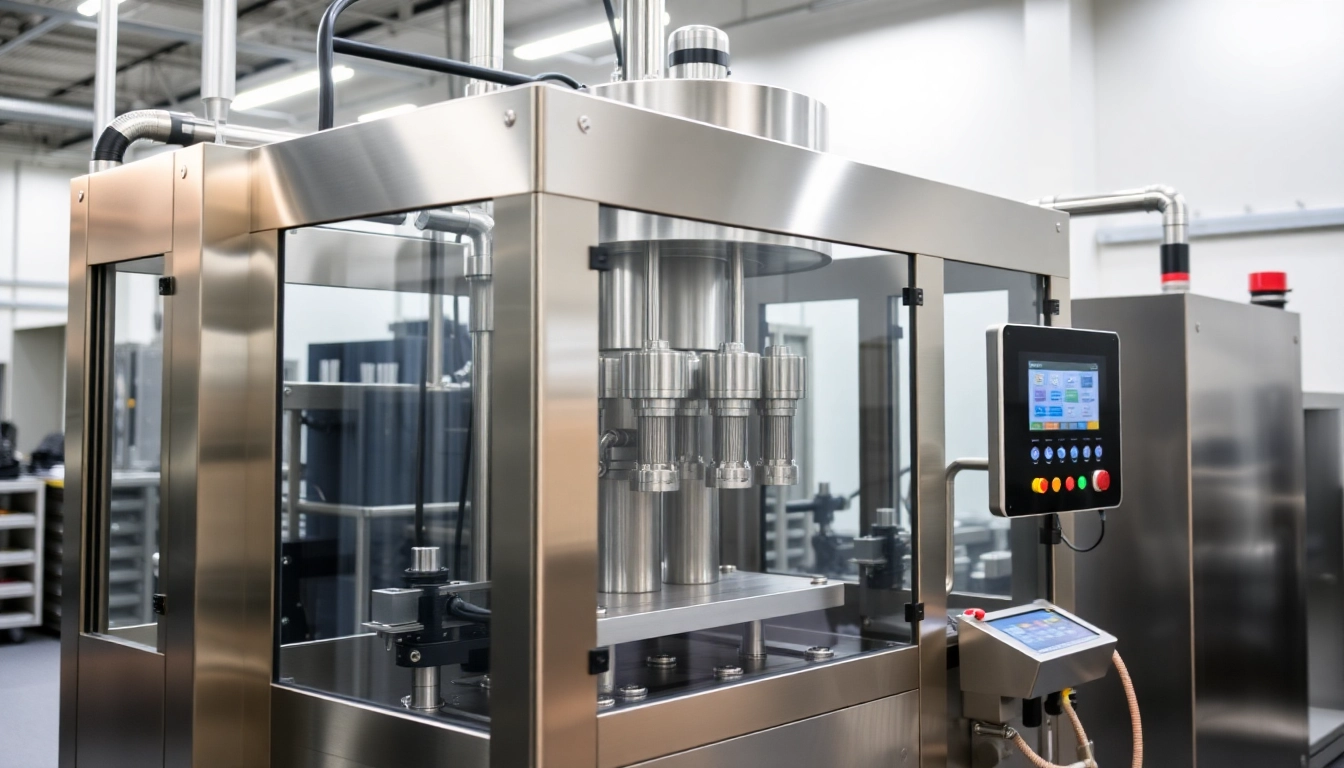Understanding NVQ Level 4 Crane Supervisor Qualifications
What is NVQ Level 4 in Crane Supervision?
The NVQ Level 4 in Crane Supervision is a nationally recognized qualification designed for individuals aspiring to take on supervisory roles in the crane operation sector within the construction industry. This qualification is aimed at those who are already working in a supervisory capacity or are looking to advance into such roles. The NVQ focuses on developing the skills, knowledge, and competencies needed to manage lifting operations safely and efficiently.
To obtain this qualification, candidates must demonstrate a high degree of proficiency in managing crane operations, understanding regulatory requirements, and ensuring safety protocols are followed. It consists of various units covering operational planning, risk assessment, and the legal responsibilities that come with supervising lifting operations.
Importance of Certification in the Construction Industry
In the construction industry, proper certification is crucial for ensuring safety and efficiency on-site. The NVQ Level 4 Crane Supervisor qualification serves as a testament to a supervisor’s ability to manage lifting activities legally and safely. With a significant number of accidents attributed to poor crane management, having certified supervisors helps mitigate risks and ensures compliance with industry standards.
Additionally, certification can enhance career prospects. Many employers prefer or require candidates with NVQ qualifications, as they indicate a verified level of knowledge and skills. In competitive job markets, being certified can set candidates apart, better positioning them for promotions or new job opportunities.
Key Skills Required for a Crane Supervisor
Crane supervisors must possess a variety of skills to perform their duties effectively. Key competencies include:
- Leadership and Communication: The ability to lead teams and communicate effectively with workers, crane operatives, and other stakeholders.
- Technical Knowledge: An understanding of crane operation, types, and maintenance requirements.
- Organizational Skills: Capability to plan and manage lifting operations, including scheduling and resource allocation.
- Risk Assessment and Safety Compliance: Knowledge of safety regulations and ability to conduct risk assessments to ensure safe work environments.
- Problem-solving: Ability to address unexpected challenges during lifting operations or to adapt plans as necessary.
Preparing for Your NVQ Level 4 Crane Supervisor Assessment
Study Strategies for Effective Learning
Preparation for the NVQ Level 4 assessment requires a strategic approach. Here are effective study strategies:
- Create a Study Schedule: Develop a timeline that allocates sufficient time for each unit of the curriculum, ensuring all materials are covered well before the assessment date.
- Engage with Practical Workshops: Hands-on experience is invaluable. Participating in workshops or hands-on training will enhance your understanding of crane operations and safety measures.
- Utilize Study Groups: Joining a study group can facilitate knowledge sharing and provide moral support. Discussing various topics with peers can deepen understanding and stimulate critical thinking.
- Practice Mock Tests: Familiarizing yourself with the types of questions that may appear in the assessment through mock exams can significantly boost confidence and prepare you for the actual exam format.
Resources and Practice Questions Available
A variety of resources are available to aid candidates in preparing for their NVQ Level 4 Crane Supervisor assessment. Online platforms, books, and reference materials can provide valuable insights and practice questions:
- Online Courses and Webinars: These provide structured learning paths and cover key topics comprehensively.
- Guides and Textbooks: Books specifically tailored for crane supervision can offer detailed information and case studies.
- NVQ Level 4 Crane Supervisor answers: Accessing comprehensive answer sets can significantly assist with study preparation, providing examples of how to respond to various questions.
- Practice Exams: Many websites and training centers offer simulated examinations to help gauge readiness.
Common Mistakes to Avoid During Preparation
While preparing for the NVQ Level 4 assessment, candidates often make common mistakes that can hinder their chances of passing:
- Procrastination: Delaying study sessions can lead to cramming, which is less effective than consistent, spaced-out learning.
- Ignoring Guidelines: Not following the assessment guidelines can result in missed marks. It’s essential to understand the structure and requirements of the assessment.
- Over-reliance on Materials: Merely memorizing data without understanding can be detrimental. Focus on grasping concepts instead of rote memorization.
- Neglecting Practical Experience: Relying solely on theoretical knowledge without practical application can undermine your readiness for real-world scenarios.
Comprehensive NVQ Level 4 Crane Supervisor Answers Overview
Sample Questions and Detailed Answers
Acquainting yourself with sample questions is crucial for your preparation. Below are a few examples you might encounter:
Question: Explain the importance of communicating lifting plans to all team members involved in a crane operation.
Answer: Clear communication of lifting plans ensures that all team members understand their individual responsibilities, the sequence of operations, and the safety measures in place. This collective understanding enhances operational efficiency by reducing the likelihood of errors, thereby promoting a safer working environment and preventing accidents.
Analyzing Real Assessment Scenarios
Real assessment scenarios often simulate challenges that crane supervisors may face on site. For example, consider a scenario where adverse weather conditions might affect a planned lift:
Scenario: During a scheduled lift, weather conditions turn worse than predicted, with high winds and rain. As the crane supervisor, what considerations do you need to make?
Analysis: In this scenario, the supervisor must assess the risk posed by the weather. Prior to starting the lift, consultations with the team should occur to discuss safety protocols concerning wind limits. A decision may need to be made regarding postponing the lift until conditions improve. Additionally, if operations must continue, contingency plans should be established to ensure rapid response in the event of heightened risks.
Expert Tips for Answering Effectively
Crafting effective responses during your assessment can significantly impact your results. Here are expert tips to assist:
- Read Questions Carefully: Ensure you understand what each question is asking before formulating your response.
- Use Structured Responses: Where applicable, use the STAR (Situation, Task, Action, Results) method to provide structured answers that demonstrate your critical thinking and problem-solving capabilities.
- Include Examples: When relevant, include real-life examples from your experience that highlight your capabilities and understanding of procedures.
- Be Concise: Aim for clarity and conciseness in your responses. Avoid unnecessary jargon that may make your answers harder to comprehend.
Regulations and Standards for Crane Operations
Key Legislation Affecting Crane Supervision
Understanding the legal framework surrounding crane operations is essential for any crane supervisor. Key legislation governing crane operations includes:
- Health and Safety at Work Act 1974: This act places a duty on employers to ensure the health and safety of their workers, notably during lifting operations.
- Provision and Use of Work Equipment Regulations (PUWER) 1998: PUWER mandates that all lifting equipment used at work is suitable for its intended purpose and regularly maintained.
- Lifting Operations and Lifting Equipment Regulations (LOLER) 1998: LOLER requires that lifting operations are planned and supervised by competent staff, ensuring equipment is safe for lifting.
Safety Protocols and Risk Management
Safety protocols are paramount for reducing accidents during lifting operations. Crane supervisors must ensure the following protocols are followed:
- Pre-Lift Checklists: Conduct thorough inspections of all equipment and the lifting environment to identify potential risks before beginning operations.
- Risk Assessments: Carry out comprehensive risk assessments for all lifting operations, reviewing potential hazards and harm that could arise during lifts.
- Training and Competency: Ensure all personnel involved in the lifting operations are appropriately trained and aware of safety procedures.
Best Practices for Compliance
Adhering to industry standards and legislation is crucial. Employing the following best practices will help ensure compliance:
- Regularly update knowledge of current regulations and standards.
- Engage employees in safety workshops to reinforce compliance and awareness.
- Document all safety measures and inspections meticulously, creating an audit trail that can aid in investigations if incidents occur.
Enhancing Your Career as a Crane Supervisor
Opportunities for Further Development
Advancing as a crane supervisor often includes seeking further qualifications or training that can augment existing skills. Options for continued professional development might include:
- Pursuing NVQ Level 5 qualifications to solidify supervisory and management skills.
- Engaging in specialized workshops focused on new lifting technologies and methods.
- Exploring certifications in related areas such as rigging or safety management, which can provide broader operational perspectives.
Networking and Professional Associations
Networking is a critical avenue for career advancement in crane supervision. Joining professional associations such as the Construction Plant-hire Association (CPA) or the National Association of Lift Supervisors (NALS) can open doors to valuable resources, industry knowledge, and networking opportunities.
Impact of Technology on Crane Supervision
The construction industry is rapidly evolving thanks to technology. Crane supervisors should stay abreast of advancements that can improve operations:
- Drones: Used for site surveys and monitoring, offering visual insights that aid in planning lifts with greater accuracy.
- Telematics: Providing real-time data on crane operation metrics, which can assist supervisors in ensuring optimal performance and safety.
- Augmented Reality (AR): Enhancing training programs, allowing operatives to visualize complex lifting scenarios before actual deployment.
By embracing these technologies, crane supervisors can enhance the safety and efficiency of lifting operations, ultimately contributing to their personal career development and the overall success of their organizations.



